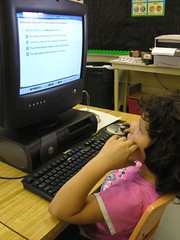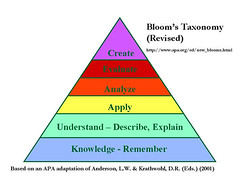
Educational software, a $2 billion-a-year industry that has become the darling of school systems across the country, has no significant impact on student performance, according to a study by the U.S. Department of Education.
Source: washingtonpost.com
I have to admit that I am really not all that surprised by these
findings. I have always been somewhat skeptical of many of the educational software titles out on the market. The way I see it, most of these titles are only taking the drill and kill exercises that students once completed at their desks and putting them on a computer screen. Students are not required to use higher-order thinking. Teachers save time not having to learn new skills themselves and are given a false sense that they are effectively integrating technology in their classroom. If schools wish to integrate technology into the classroom and ultimately raise test scores, those technologies or applications must force students to operate at higher levels of thinking, something I do not see the everyday educational software program doing. I think that there are many reasons why schools are “fooled” about the effectiveness of their technology strategies. Five of these reasons are:
technology in their classroom. If schools wish to integrate technology into the classroom and ultimately raise test scores, those technologies or applications must force students to operate at higher levels of thinking, something I do not see the everyday educational software program doing. I think that there are many reasons why schools are “fooled” about the effectiveness of their technology strategies. Five of these reasons are:
- Not fully understanding what it means to integrate technology into the curriculum.
- Relying on one or a small handful of applications to address students needs.
- Ignorance of the technology options available to them.
- A steep learning curve among teachers and administrators caused by traditional pedagogies and time constraints.
- Great salespeople.
Hopefully, the DOE study will get schools thinking about what this means and cause them to re-evaluate their technology plans. Hopefully, the DOE study will cause teachers and administrators to talk about what it really means to integrate technology and how technology can effectively be used to raise test scores. So what do you think? Have many of our schools been fooled?
Comment
© 2025 Created by Steve Hargadon.
Powered by
![]()
You need to be a member of Classroom 2.0 to add comments!
Join Classroom 2.0